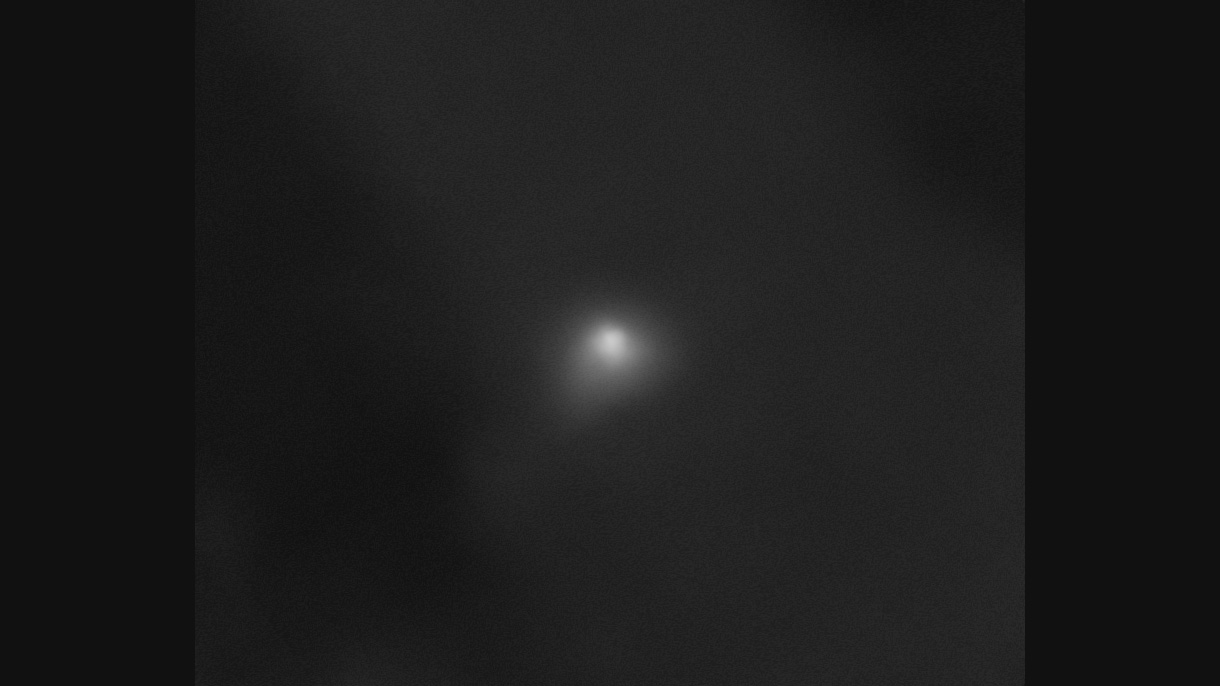
Cassini team members continued working to ensure that a complete and thorough archive of all the mission's data will be available for decades to come. Expectations are that it will serve ongoing research by basically anyone in the world. Work is also proceeding on writing and editing the Cassini Final Mission Report, and preparations are now being finalized for next month's Cassini Project Science Group (PSG) meeting. It will be the final PSG to be held at JPL. One Cassini Symposium in Boulder, Colorado, and one last PSG in Pasadena, remain in the Mission's future.
Sunday June 3
A 2007 Cassini image of Saturn's two-tone moon Iapetus was selected as the NASA Astronomy Picture of the Day today. Enlarging the image to its full size reveals the tall equatorial mountain range and shows the starkly contrasting bright and dark areas on Iapetus's surface. The 17th century astronomer Giovanni Domenico Cassini discovered Iapetus, though he could see it only when it was on the western side of its orbit of Saturn. He postulated, in 1671, that Iapetus's rotation was tidally locked to the planet, and that its leading hemisphere was too dark to reflect much sunlight. Cassini the spacecraft proved the astronomer's conjecture to be correct: https://apod.nasa.gov/apod/ap180603.html.
Monday June 4
The Cassini website featured an image of Saturn's icy moon Tethys taken in 2015. Its most striking feature tells of a huge ancient impact:/resources/17840/mighty-odysseus.
Friday June 8
The Cassini Spacecraft Operations (SCO) Manager went to Redondo Beach, California, and gave a well-received presentation to employees at the Sector Headquarters of the Northrop Grumman Corporation.
Thursday June 14
Authors on the Cassini Spacecraft Operations team learned that their paper had been accepted for publication in the AIAA Journal of Spacecraft and Rockets. It is titled, "Cassini Power during the 20 Year Mission and the Final Plunge into Saturn."
Friday June 15
Again today, the SCO Manager was on the road. The dress was more formal this time though, because it took place at one of the oldest scientific societies in the United States. It was the 2,394th meeting of the Philosophy Society of Washington, D.C., which was founded in 1871. The occasion was the 87th Joseph Henry Lecture, "Cassini's Spectacular Saturn -- How it Revolutionized Our View of Planets, Moons, and the Possibilities for Life in the Universe." Joining her were four planetary-scientist colleagues.
This lecture series, which is available online, is named in honor of the Smithsonian Institution's first Secretary, who did pioneering work in the field of electromagnetics.
Wednesday June 20
An animation was published today that offers a closeup of Cassini's final set of orbits, highlighting the gravity-assist nudges provided by the spacecraft's final flybys of Titan: /resources/17841/grand-finale-orbits-begin-and-end-with-titan.
Tuesday June 26
Saturn is at opposition tomorrow, when it and the Sun are in line on opposite sides of Earth. It rises at sunset and sets at sunrise; great Saturn viewing will last several more months. The best views this month will be just after midnight. All year, the rings have been tilted wide open -- almost 26 degrees wide this month -- giving us a great view of Saturn's distinctive rings. The tilt offers a view of the north polar region that was so exquisitely imaged by the Cassini spacecraft.



































